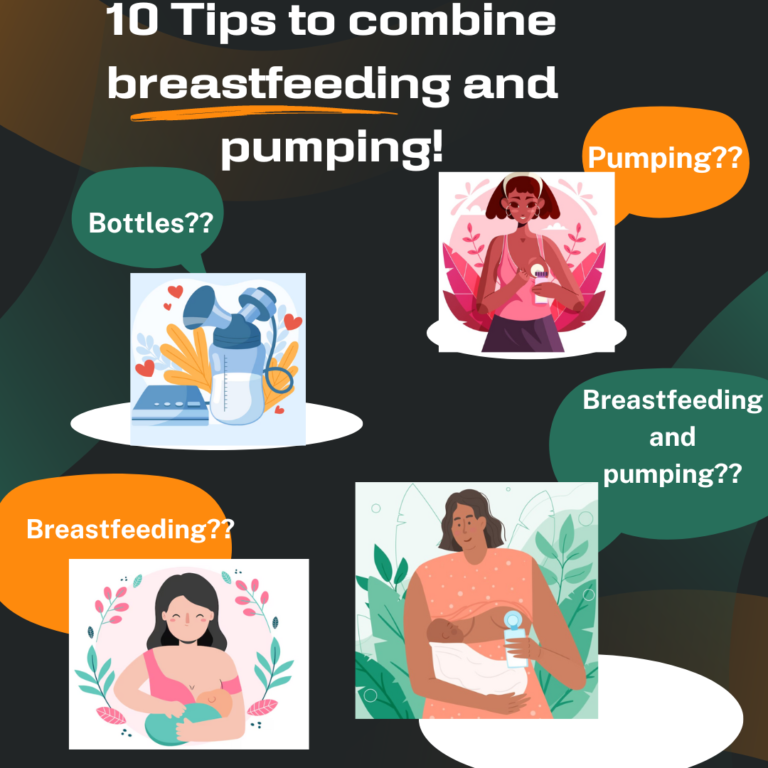Twin-to-Twin Transfusion Syndrome: Baby Care and Parental Support

Twin-to-Twin Transfusion Syndrome (TTTS) can present unique challenges for parents of twins. In this guide, we’ll explore what TTTS is, its impact on babies and mothers, and how it may affect breastfeeding. Discover the risks, management strategies, and potential long-term effects, providing valuable insights for parents facing this condition.

What is Twin to Twin transfusion syndrome?
Twin-to-Twin Transfusion Syndrome (TTTS) is a rare and potentially serious condition that can occur in pregnancies involving identical twins who share a single placenta (monochorionic twins). In TTTS, there is an imbalance in the blood flow between the twins through the shared placenta.
One twin, known as the “donor,” sends too much blood to the other twin, the “recipient.” This imbalance can lead to various complications, including one twin having too little blood volume (resulting in growth restriction) while the other has too much (causing strain on the heart).
Can babies survive TTTS?
With early diagnosis and appropriate medical intervention, many babies affected by TTTS can survive and thrive. Timely interventions, such as laser therapy to seal blood vessel connections in the placenta (selective fetal reduction), amniotic fluid reduction, or other medical treatments, can improve the chances of a positive outcome.

However, the success of treatment depends on various factors, including the severity of TTTS and the gestational age at which it is diagnosed and treated. Close monitoring by healthcare professionals is crucial for managing TTTS effectively.
Who is at highest risk of TTTS?
The highest risk factor for developing Twin-to-Twin Transfusion Syndrome (TTTS) is when a pregnancy involves monochorionic twins. These are twins who share a single placenta. TTTS occurs in approximately 10-15% of monochorionic twin pregnancies.
Other risk factors that may increase the likelihood of TTTS include:
- Monochorionic-Monoamniotic Twins: This is a specific type of monochorionic twin pregnancy where the twins share both a placenta and an amniotic sac. These pregnancies have a higher risk of TTTS.
- Prior History of TTTS: If a mother has had a previous pregnancy affected by TTTS, the risk is higher in subsequent pregnancies involving monochorionic twins.
- Family History: A family history of TTTS or other complications in monochorionic pregnancies may increase the risk.
- Advanced Maternal Age: Mothers over the age of 30 may have a slightly higher risk of TTTS.
- Certain Complications: Conditions such as high blood pressure, diabetes, or vascular disorders in the mother may also be associated with a higher risk of TTTS.
It’s important to note that while these factors may increase the risk of TTTS, the condition can still occur in pregnancies without these risk factors. Regular prenatal care and monitoring by healthcare professionals are essential for early detection and management of TTTS in high-risk pregnancies.
Breastfeeding challenges when baby is Twin-to-Twin Transfusion Syndrome (TTTS)
Breastfeeding twins, especially when one or both babies have experienced Twin-to-Twin Transfusion Syndrome (TTTS), can present unique challenges and considerations. Here, we’ll explore how TTTS may affect breastfeeding and offer insights into managing this situation:
1. Early Feeding Challenges: Babies affected by TTTS may be born prematurely or with low birth weights. Premature birth can sometimes impact a baby’s ability to latch and feed effectively. In such cases, support from a lactation consultant or healthcare provider can be invaluable in establishing breastfeeding.
2. Monitoring Growth: Babies with TTTS may have different growth rates due to the syndrome’s effects. Monitoring their growth and weight gain closely is crucial. Healthcare professionals can provide guidance on ensuring that both babies receive adequate nutrition and thrive.
3. Breast Milk Supply: Maintaining an adequate milk supply to feed two babies can be demanding. Mothers of twins, especially those with one or both affected by TTTS, may benefit from professional guidance on boosting milk production, such as frequent pumping and ensuring proper nutrition and hydration.
4. Individualized Feeding Plans: Each twin may have unique feeding requirements. One baby may need more frequent feeds or a different feeding schedule. Customizing feeding plans to accommodate these differences can help ensure both babies receive the nourishment they need.
5. Latching and Sucking Challenges: Babies with TTTS may have challenges with latching and sucking due to prematurity or other factors. Techniques such as finger feeding, using a nipple shield, or seeking guidance from a lactation consultant can assist with latching difficulties.
6. Support for the Mother: Breastfeeding twins can be physically and emotionally demanding. Mothers may experience increased stress, fatigue, and concerns about their babies’ health. It’s essential to have a support system in place, including partners, family members, and healthcare providers.
7. Pumping and Storing Breast Milk: Pumping breast milk can provide flexibility when caring for twins affected by TTTS. It allows other caregivers to participate in feedings, and it ensures a consistent milk supply even when direct breastfeeding is challenging.
8. Seek Professional Guidance: Consult with healthcare professionals and lactation consultants who have experience with TTTS and multiple births. They can provide personalized guidance, support, and troubleshooting for breastfeeding twins in this unique situation.
9. Feeding Plans After Discharge: After hospital discharge, maintaining feeding routines and monitoring both babies’ growth should continue. Regular check-ups and consultations with healthcare professionals are essential.
10. Be Patient and Persistent: Breastfeeding twins, especially when TTTS is a factor, may require time, patience, and persistence. Don’t be discouraged by initial challenges, as many parents successfully breastfeed their twins with the right support and strategies.
Breastfeeding can offer numerous benefits to twins, including bonding, nutrition, and immune support. With the right guidance and support from healthcare professionals and lactation experts, parents can navigate the complexities of breastfeeding.
Does TTTS affect the mother?
Yes, Twin-to-Twin Transfusion Syndrome (TTTS) can affect the mother both emotionally and physically. Mothers may experience stress, anxiety, and emotional strain due to the diagnosis and uncertainty.

Frequent medical appointments, fear for their babies’ well-being, and difficult treatment decisions can add to the emotional burden. Physical discomfort and the role of primary caregiver can also be challenging. Postpartum recovery and ongoing health concerns for the babies can prolong emotional stress. Support from healthcare providers, counseling, and communication with support networks are essential for mothers dealing with TTTS.
How do you manage TTTS after delivery?
Managing Twin-to-Twin Transfusion Syndrome (TTTS) after delivery involves a combination of medical care and ongoing monitoring. Here are key aspects of post-delivery management:
1. Neonatal Intensive Care: Babies affected by TTTS may be born prematurely and with varying degrees of medical complications. They may require care in a Neonatal Intensive Care Unit (NICU) to address any immediate health concerns.
2. Close Monitoring: Pediatricians and neonatologists will closely monitor the babies’ health, growth, and development. This includes tracking weight gain, assessing organ function, and addressing any potential complications resulting from TTTS.
3. Nutritional Support: Babies with TTTS may have unique nutritional needs due to their growth patterns and potential complications. Healthcare professionals will develop feeding plans tailored to each baby’s requirements.
4. Surgical Intervention: In severe cases of TTTS, babies may require surgical interventions shortly after birth. These interventions can include procedures to address heart or organ abnormalities.
5. Long-Term Follow-Up: Babies affected by TTTS may require ongoing medical care and follow-up appointments to assess their development and address any potential long-term effects of the condition.
6. Emotional Support: Parents of babies with TTTS may experience ongoing emotional stress. Support from healthcare providers, counselors, and support groups can be invaluable in coping with the challenges of caring for babies with medical needs.
7. Continued Medical Care: The management of TTTS does not end with delivery. Babies may require specialized medical care and therapies as they grow. Continued monitoring and support from healthcare professionals will be necessary to address any developmental delays or health concerns.
It’s essential for parents to maintain open communication with their healthcare team and follow the recommended medical care plan for their babies. The exact management plan will depend on the severity of TTTS and any specific health issues that may have arisen as a result of the condition. Each baby’s care will be individualized to meet their unique needs.
What are the long term effects of twin to twin transfusion?
Managing Twin-to-Twin Transfusion Syndrome (TTTS) after delivery involves a comprehensive approach to address the unique needs of babies affected by this condition. Here’s a more detailed overview:
- Neonatal Intensive Care: Babies born with TTTS may be premature and could require immediate care in a Neonatal Intensive Care Unit (NICU). The NICU provides specialized medical attention to address any immediate health concerns or complications.
2. Close Monitoring: Pediatricians and neonatologists will closely monitor the health and progress of both babies. This includes regular assessments of vital signs, organ function, and growth patterns. Monitoring helps identify and address any complications that may arise due to TTTS.
3. Nutritional Support: Babies affected by TTTS may have varying nutritional needs. Healthcare professionals will create individualized feeding plans to ensure that each baby receives the appropriate nutrients for optimal growth and development.
4. Surgical Intervention: In severe cases of TTTS, surgical procedures may be necessary shortly after birth. These interventions could involve correcting heart abnormalities or other health issues that arose as a result of the condition.
5. Long-Term Follow-Up: Babies with TTTS may require ongoing medical care and regular follow-up appointments. These appointments are crucial for monitoring their development and addressing any potential long-term effects of TTTS.
6. Emotional Support: Caring for babies with medical needs can be emotionally challenging for parents. They may continue to experience stress and anxiety. Emotional support, both from healthcare providers and support groups, can help parents cope with the ongoing challenges.
7. Continued Medical Care: The management of TTTS extends beyond the neonatal period. Babies may require specialized medical care and therapies as they grow. This may include developmental assessments and interventions to address any delays or health concerns.
Managing TTTS after delivery is a complex and ongoing process. It requires a collaborative effort between healthcare professionals and parents to ensure the best possible care for the affected babies. Each management plan is tailored to the unique needs of the babies based on the severity of TTTS and any specific health issues that have arisen.
Conclusion
In conclusion, managing Twin-to-Twin Transfusion Syndrome (TTTS) after delivery requires a multidisciplinary approach and ongoing vigilance. Babies affected by TTTS may face unique challenges, but with specialized medical care, nutritional support, and emotional resilience, they can overcome many obstacles. Parents play a crucial role in their babies’ journey, advocating for their health and seeking emotional support when needed. TTTS is a testament to the importance of medical advancements and the strength of families. With time, patience, and unwavering dedication, babies affected by TTTS can grow into thriving individuals, bringing hope and inspiration to all.
Frequently asked question
Can babies survive Twin-to-Twin Transfusion Syndrome?
With timely diagnosis and appropriate medical intervention, many babies affected by TTTS can survive and thrive.
Are all twin pregnancies at risk of TTTS?
No, TTTS primarily occurs in identical twins who share a placenta. It is relatively rare but requires vigilant monitoring.
Is breastfeeding possible when one or both twins have TTTS?
Yes, breastfeeding is often possible, but it may require additional support and strategies to address unique challenges.
Note: The content provided in this blog is for educational purposes and general guidance. For personalized advice on breastfeeding or if you encounter specific challenges, we strongly recommend consulting a healthcare professional or a board-certified lactation consultant (IBCLC). Each mother and baby’s situation is unique, and expert guidance ensures the best care for both.
















+ There are no comments
Add yours